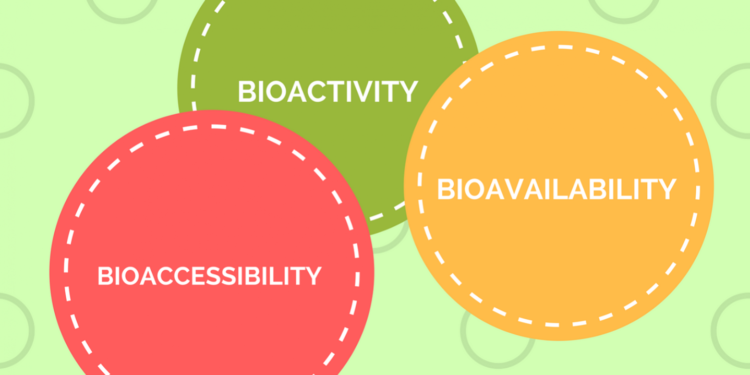The term “bioavailability” is commonly used in the medical literature. It has everything to do with absorption – It means how quickly, in what quantity, and overall in what quality medications, foods, supplements and treatments are absorbed into the body. Below we explore some of its ramifications for healthful approaches to our well-being regimens.
Nutrient bioavailability – whether you can actually digest food or supplement, and how this affects your own physiology – is all related to the state of your body itself. Factors like your digestion, general state of the intestines, and metabolic function play a role.
The key to a successful vitamin or supplement is the ingredients themselves, and their ability to work harmoniously together in order to be absorbed into the body.
NUTRIENT BIOAVAILABILITY
if nutrient bioavailability is to be understood as the “ proportion of a nutrient that is absorbed from the diet and used for normal body functions”, then we must first consider the body and its ability to absorb nutrients.
According to the University, “After nutrients are digested, the amount absorbed and retained depends on your body’s needs, which are largely determined by your age, sex, health, and the level of nutrients already in your body.”
A healthy man absorbs less than 1% of the iron in a balanced diet, but a woman with anaemia will absorb as much as 35% of the iron in her diet. In simple terms, when your body doesn’t have enough iron to support normal functioning, you’re considered anaemic.
Calcium, for example, taken with a meal provides more than twice the bioavailability of calcium from supplements. As with vitamin C supplements, if both are given the same dose, their nutrient bioavailability, therefore, varies.
As we learn more about nutrition, it’s important that we understand the importance of co-nutrients (not only as they relate to food, but also as they relate to vitamins) as well as their effects on our bodies. A common example many may be familiar with is that of calcium and vitamin D: without adequate amounts of vitamin D, calcium cannot be properly absorbed by the body; conversely, without adequate amounts of calcium, vitamin D cannot be properly utilized.
VITAMIN BIOAVAILABILITY
What your body can process is going to be a big advantage, but if you’re taking in a huge amount of ingredients, it could really throw you off. You want to make sure the ingredients are in the food or supplements that you take, they’re just working together to work together, so better together than separately.
If you eat them, vitamin C will make it more slowly through your digestive system and into your bloodstream. So you’re getting the same amount of vitamins (just smaller doses) without having to wait longer for the entire dosage to be absorbed. And because the vitamins themselves have been taken from natural sources, they are less likely to cause side effects than synthetic forms.
Preliminary research has shown that due to natural genetic variation, some people are better suited to plant-based diets. For example, vitamin A needs to be converted into an active form in the body, and this takes more steps when it is sourced from a plant source. Some people’s bodies convert certain vitamins into useable forms more or less efficiently than others. If one can’t consume an adequately diverse diet for medical, cultural or ethical reasons, consuming vitamins in bioavailable forms might be a supportive fit.
Pharmacodynamics is the study of how drugs are metabolized by the body, and how this affects biological processes. Pharmacokinetics is the study of how a drug gets into the body when it is ingested or applied topically, such as when a patient takes an antibiotic, or to what extent it needs to be administered to achieve therapeutic levels in the blood.
